Discover the Enigmatic Taosi Ruins: A Journey into Ancient Chinese Civilization
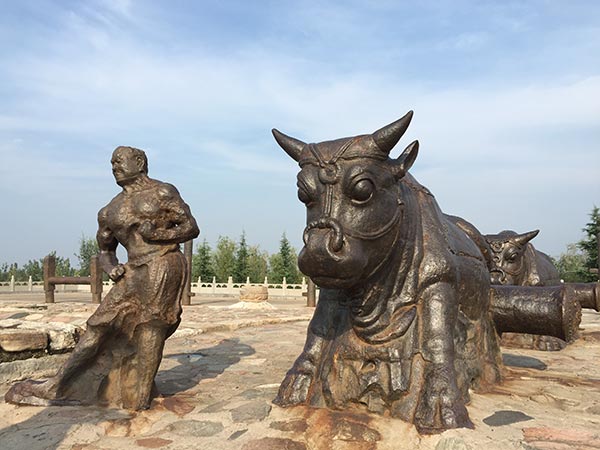
An Essential Guide to Visiting Taosi Ruins
In This Guide
- An Essential Guide to Visiting Taosi Ruins
- The Rich History and Legends of Taosi Ruins
- Main Highlights: What You Absolutely Can’t Miss
- Planning Your Visit: A Practical Guide
- Tickets: Prices, Booking, and Tips
- How to Get There: A Complete Transportation Guide
- Local Cuisine and Accommodation Nearby
- Frequently Asked Questions
- Final Thoughts on Your Trip
Visiting the Taosi Ruins is akin to stepping into a time capsule that transports you back over 4,000 years to a pivotal era in Chinese history. Nestled in the heart of Shanxi province, these ancient remnants whisper tales of a sophisticated civilization, believed by some historians to be the capital of the legendary sage emperor Yao. As you wander through this expansive archaeological site, which spans approximately 2.8 million square meters, you will encounter a rich tapestry of cultural heritage that showcases the urbanization and social stratification of prehistoric China.
A Glimpse into Ancient Civilization
The Taosi site is not merely an excavation; it is a window into the complexities of early urban life. Here, you’ll discover remnants of a fortified city, complete with walls, moats, and distinct areas for nobility, commoners, and ceremonial practices. The ruins include a palace enclosure, royal cemeteries, and even areas for craft production, all of which testify to the city’s status as a political and cultural hub. Notably, Taosi is recognized for its ancient observatory, which highlights the astronomical knowledge possessed by its inhabitants—an impressive feat for a civilization that thrived long before the advent of written records.
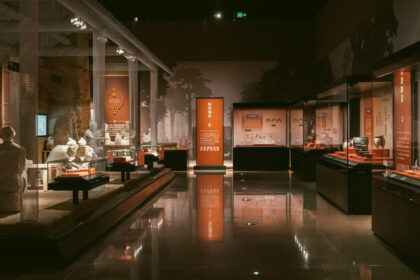
Taosi Ruins.
Exploring the Site
Your journey begins at the visitor center, where models and exhibits provide context to the ruins you are about to explore. Following this orientation, you can traverse the site on foot or via electric carts, allowing you to immerse yourself fully in the serene landscape dotted with fields and historical markers. The experience is enhanced by expert guides who can illuminate the significance of various structures and artifacts.
Practical Information for Your Visit

Taosi Ruins.
- Location: The Taosi Ruins are situated in Xiangfen County, close to Linfen City in Shanxi Province.
- Access: Visitors can reach the site via public transport or by car, with ample parking available. It is advisable to check the opening hours in advance, as they may vary.
- Tickets: Entrance fees are typically modest, making this a budget-friendly option for history enthusiasts.
- Best Time to Visit: Spring and autumn are ideal seasons due to the pleasant weather, allowing for a more enjoyable exploration of the outdoor site.
Connecting with History
While standing among the remnants of this ancient civilization, one cannot help but feel a profound connection to the past. The Taosi Ruins invite you to reflect on the beginnings of urban life in China, the political systems that shaped early societies, and the cultural legacy that continues to influence modern China. As you navigate this historical landscape, take a moment to appreciate the quiet power of the stories that lie beneath your feet—stories of innovation, governance, and human resilience that have shaped the trajectory of one of the world’s oldest continuous civilizations.
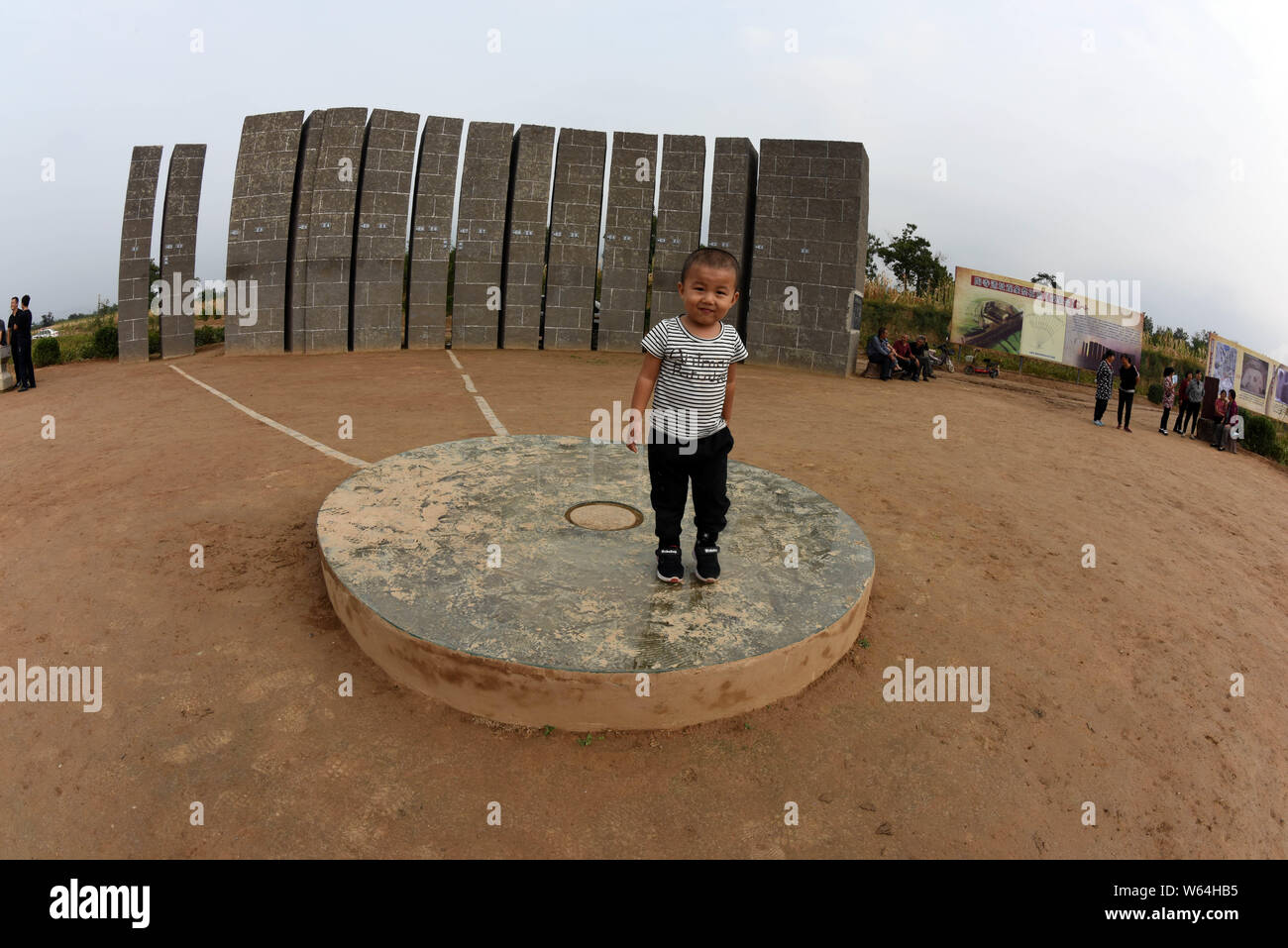
Taosi Ruins.
The Rich History and Legends of Taosi Ruins
Nestled in the heart of Shanxi province, the Taosi Ruins stand as a testament to the sophisticated civilization that flourished between 2300 and 1900 BCE. This archaeological site, spanning approximately 2.8 million square meters, provides a fascinating glimpse into early Chinese urban life and governance. Here, we explore the rich history and captivating legends associated with Taosi, a locale that may have served as the capital of the legendary sage Emperor Yao.
Historical Significance
The Taosi site was unearthed in the late 20th century, revealing a complex urban center characterized by its impressive rammed-earth walls and organized layout. Archaeological findings have uncovered a variety of structures, including:
- Palace Enclosures: These monumental buildings served as the political heart of the community, reflecting the hierarchical social structure of the time.
- Elite Residential Areas: The discovery of lavish artifacts suggests a clear distinction between the living conditions of nobles and commoners.
- Ceremonial Centers: Evidence of ritual practices indicates the importance of spirituality and governance in daily life.
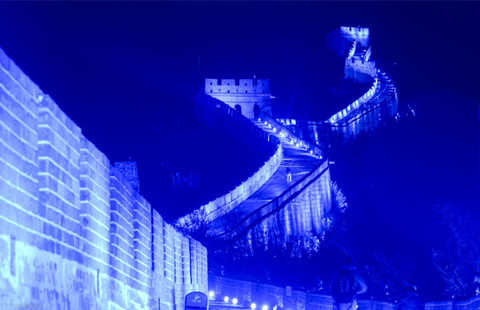
Taosi Ruins.
Taosi is often linked to the mythical figure of Emperor Yao, one of the five sage emperors revered in Chinese history for their moral virtues and benevolent rule. Although many scholars debate the historicity of Yao, the texts suggest that he governed from a capital known as Pingyang, which many believe aligns with the Taosi site.
Legends and Myths
In addition to its archaeological importance, Taosi is steeped in folklore. The legends surrounding Emperor Yao add a layer of mystique to the site:
- The Sage Emperor: According to ancient texts, Yao was not only a ruler but also a paragon of virtue. His reign is said to have been marked by prosperity and harmony, making Taosi a symbol of ideal governance.
- The Cosmic Connection: The city’s layout reflects cosmological beliefs of the time, with structures oriented to align with celestial phenomena. This suggests that the inhabitants of Taosi possessed advanced astronomical knowledge, possibly using the site as an observatory to track celestial events.
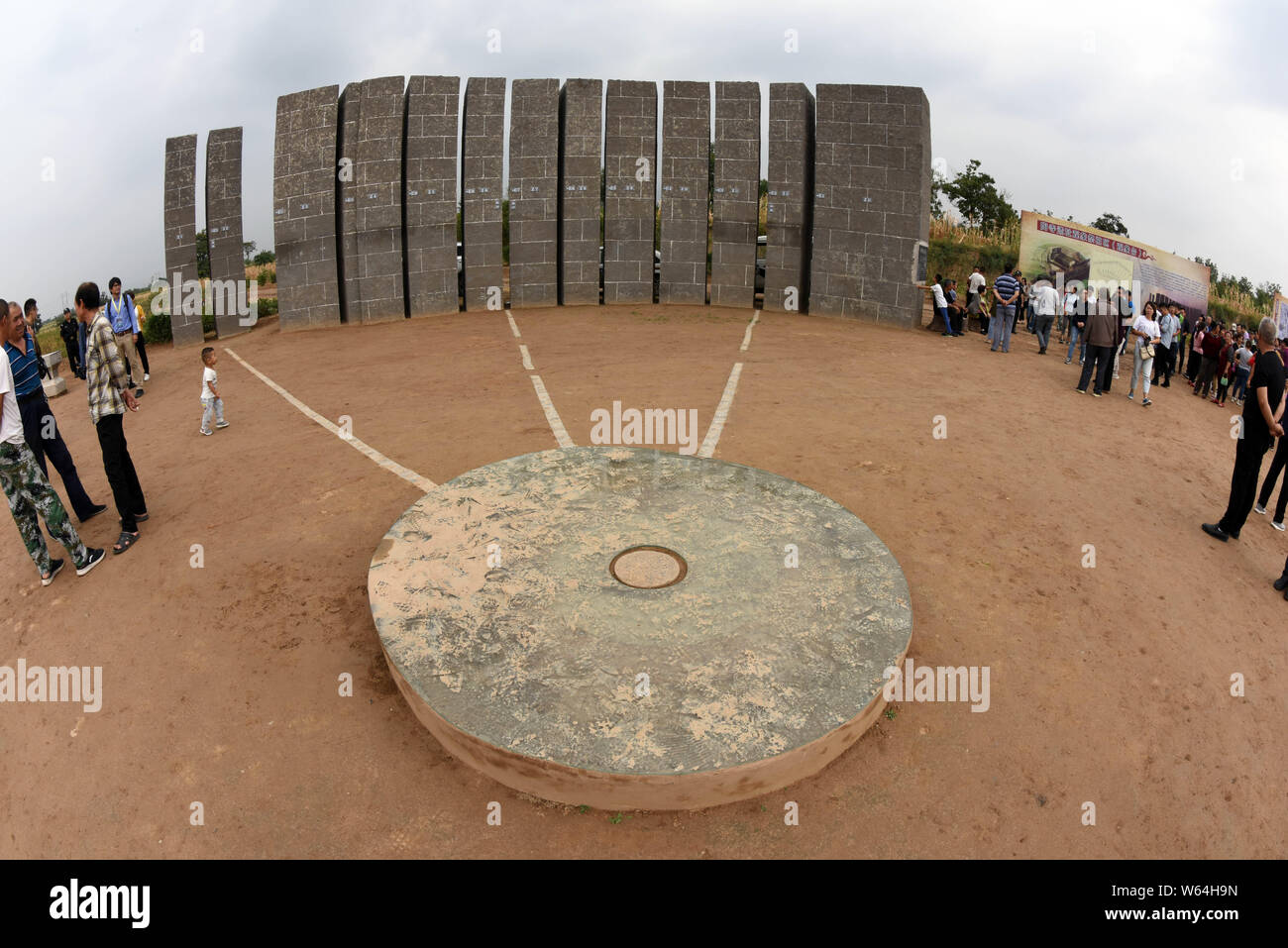
Taosi Ruins.
Cultural Legacy
The significance of Taosi extends beyond its archaeological findings. It offers profound insights into the early political structures, social hierarchies, and cultural practices of ancient China. The discovery of some of the earliest known Chinese characters on pottery at Taosi, including the characters for “Yao” and “ming” (life), illustrates the development of written language and its role in governance and communication.
Visiting Taosi Today
For travelers interested in delving into the depths of Chinese history, the Taosi Ruins provide a unique opportunity. Here, visitors can walk through the remnants of a once-thriving civilization, explore reconstructed models of its structures, and ponder the legends of Emperor Yao. As archaeological efforts continue, the site is poised to reveal even more secrets about the lives of those who inhabited this ancient urban center.
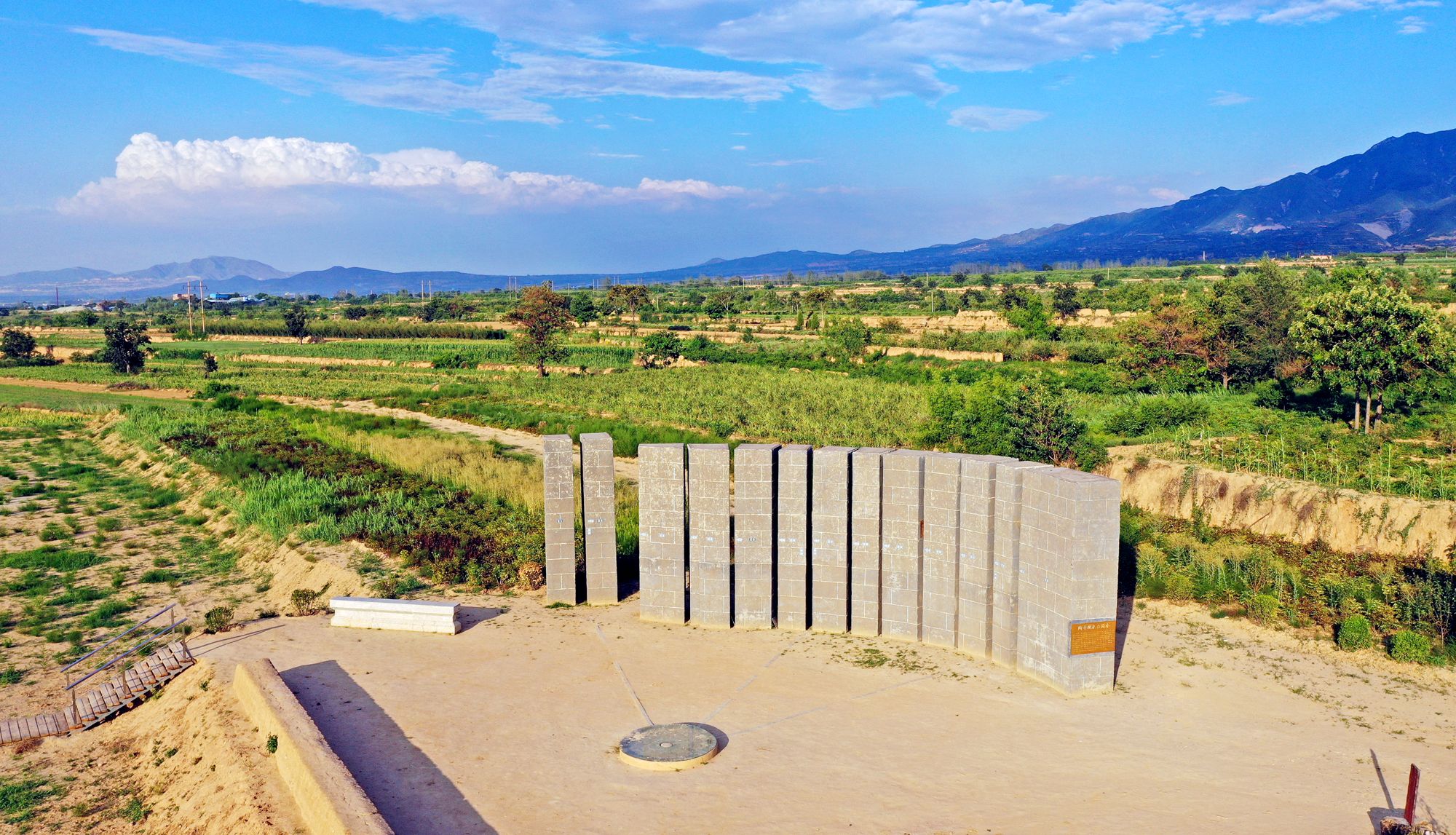
Taosi Ruins.
In summary, the Taosi Ruins not only serve as a crucial link to China’s distant past but also as a reminder of the enduring legacy of its legendary figures. Exploring this site offers an enriching experience, bridging the gap between history and myth while showcasing the cultural richness of early Chinese civilization.
Main Highlights: What You Absolutely Can’t Miss
Discovering the Taosi Ruins: A Journey Through Ancient Civilization
The Taosi Ruins (陶寺遗址), located in Shanxi Province, present an extraordinary glimpse into one of the earliest urban centers in Chinese history. Spanning over 2.8 million square meters and dating back approximately 4,100 to 4,300 years, this archaeological site reveals the foundations of a civilization that thrived long before recorded history. Here are the main highlights that you absolutely can’t miss during your visit:
1. The Enclosure and Urban Planning
As you enter the site, the massive rammed-earth enclosure that once fortified the ancient city will immediately catch your eye. Covering an area larger than 200 hectares, this monumental structure served as a protective barrier, showcasing the city’s significance as a political and ceremonial hub. The layout of the city is meticulously designed, with distinct areas for nobility, commoners, and ceremonial functions, reflecting a highly organized society.

Taosi Ruins.
2. The Ancient Observatory
One of the most remarkable features of the Taosi Ruins is the ancient observatory. This structure is believed to have played a crucial role in the civilization’s understanding of astronomy and timekeeping. Archaeologists have uncovered evidence suggesting that the observatory was used for celestial observations, integral to agricultural planning and religious ceremonies. Visitors can marvel at the ingenuity of early Chinese astronomers as they explore this ancient scientific site.
3. The Royal Cemetery and Tombs
A visit to the royal cemetery is a must for those interested in the burial practices of ancient China. The site includes several well-preserved tombs, which reveal the elaborate funerary customs of the elite. Excavations have unearthed a wealth of artifacts, including wooden furniture and pottery, that provide insight into the lives of the nobility and their beliefs about the afterlife.
4. Insights into the Sage Emperor Yao
The Taosi Ruins are often associated with Emperor Yao, a legendary figure in Chinese history. According to Confucian texts, Yao was known for his virtuous rule and is said to have established his capital at this site. While some scholars debate his historical existence, the discovery of the ruins gives credence to the possibility that Taosi was a significant political center during his supposed reign.

Taosi Ruins.
5. Ancient Artifacts and Pottery
Don’t miss the opportunity to view the artifacts excavated from the site, which include beautifully crafted ceramics adorned with intricate designs. One of the standout pieces is a color pottery plate featuring a dragon pattern, emblematic of ancient Chinese artistry. These artifacts not only highlight the aesthetic sensibilities of the time but also offer a glimpse into the daily lives of the people who inhabited Taosi.
6. The Future of the Site
The local government is actively working to promote the Taosi Ruins as a national-level archaeological park. Plans for the future include improved visitor facilities and educational programs aimed at deepening the understanding of this ancient civilization. As you explore, keep an eye out for ongoing excavation and preservation efforts that continue to unveil the secrets of Taosi.
Final Thoughts
Visiting the Taosi Ruins is more than just a trip through history; it’s an opportunity to connect with the roots of Chinese civilization. With its fascinating blend of urban planning, astronomical innovation, and rich cultural heritage, Taosi invites travelers to step into a world that shaped the foundations of China as we know it today. Whether you’re an avid historian or a curious traveler, this site is a must-see for anyone interested in the depths of China’s past.
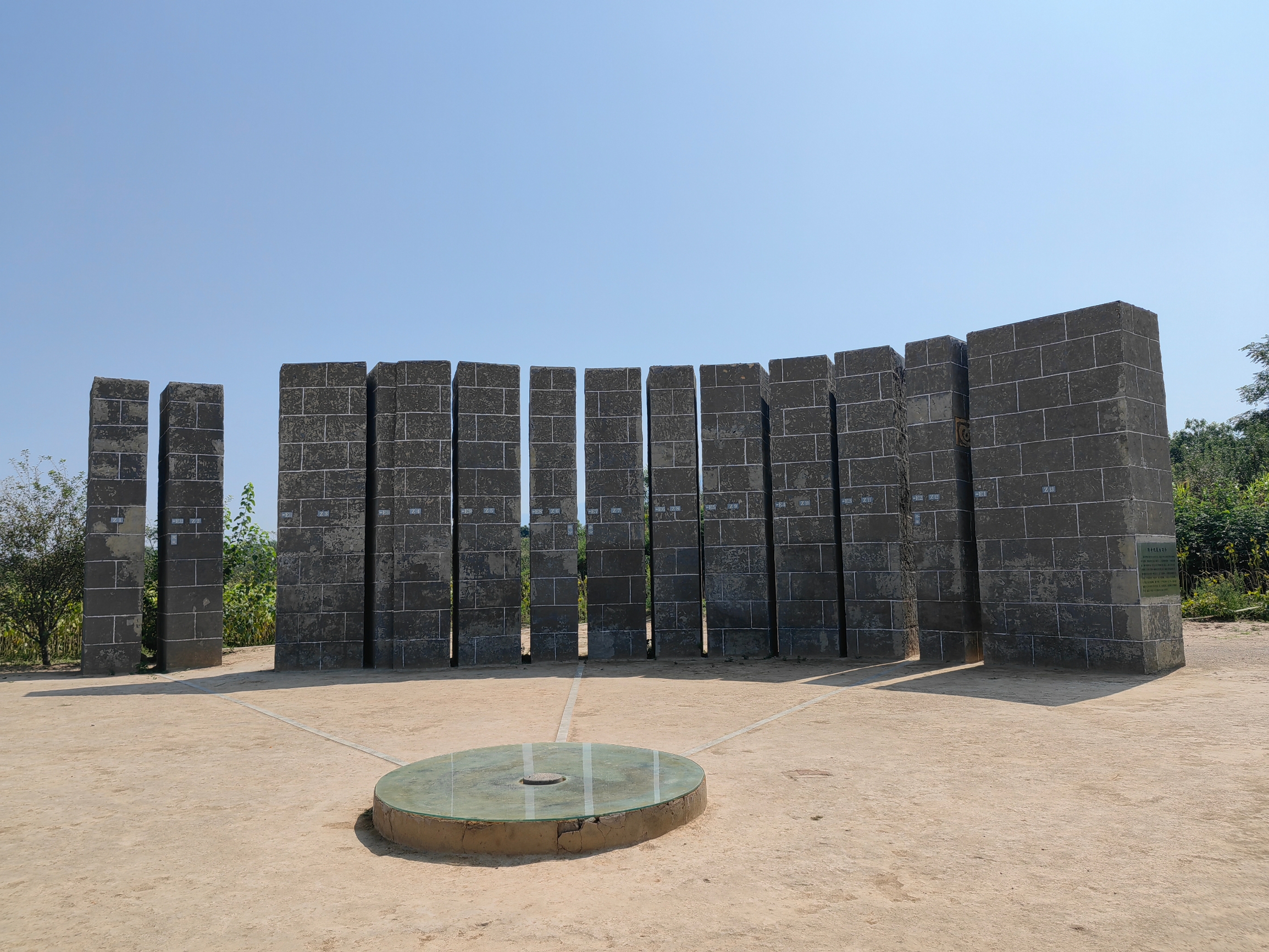
Taosi Ruins.
Planning Your Visit: A Practical Guide
Your Essential Guide to Visiting the Taosi Ruins
Nestled in the heart of Shanxi province, the Taosi Ruins offer a profound journey into the depths of ancient Chinese civilization. As one of the most significant archaeological sites in China, Taosi is believed to have been the capital of the legendary Emperor Yao, shedding light on the complexities of social structures and urbanization in prehistoric China. Here’s everything you need to know to make your visit both enjoyable and enlightening.
Getting There
Location: The Taosi Ruins are located in Xiangfen County, Linfen City, approximately 45 kilometers northeast of the bustling city of Taiyuan.

Taosi Ruins.
Transport:
– By Train: The nearest major train station is in Linfen. From there, you can take a taxi or a local bus to reach the site.
– By Bus: Direct buses from Taiyuan to Xiangfen are available, with connections to the Taosi site.
– By Car: Renting a car or hiring a driver is a convenient option for those wishing to explore the surrounding areas at their own pace.
Opening Hours and Tickets
Hours: While specific opening hours may vary, it is advisable to check in advance as the site has been known to adjust its timings based on seasonal or operational changes.
Tickets: Entry fees are generally modest, and it’s wise to purchase tickets online or at the site to avoid long queues. Keep an eye out for promotional offers or guided tours that can enhance your experience.
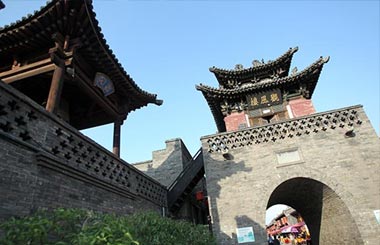
Taosi Ruins.
What to Expect
- Archaeological Significance: The site covers approximately 2.8 million square meters and dates back over 4,100 years. Here, you’ll find remnants of a complex urban settlement including a palace, residential areas for both nobility and commoners, and ceremonial centers.
- Cultural Exhibits: A visitor center may feature models and displays that provide context to the ruins, showcasing artifacts such as pottery and ancient tools that illustrate the daily lives of its inhabitants.
- Guided Tours: Consider joining a guided tour to gain deeper insights into the archaeological findings and the historical significance of the site. Knowledgeable guides can offer fascinating stories about the legendary Emperor Yao and the societal structures of the time.
Nearby Attractions
After exploring the Taosi Ruins, consider visiting these nearby sites:
– Hukou Waterfall: Known for its breathtaking natural beauty, this waterfall is a must-see for nature lovers.
– Emperor Qinshihuang’s Mausoleum: A UNESCO World Heritage site, this ancient tomb complex showcases the grandeur of China’s first emperor.
– Xi’an City Wall: A well-preserved ancient city wall that offers stunning views and a glimpse into the military history of China.

Taosi Ruins.
Tips for Your Visit
- Wear Comfortable Shoes: The site involves walking over uneven terrain, so be prepared with sturdy footwear.
- Stay Hydrated: Bring water, especially during warmer months, as the site can be expansive and the sun can be intense.
- Respect the Heritage: As with any historical site, be mindful of your surroundings and adhere to visitor guidelines to help preserve this ancient treasure for future generations.
Conclusion
The Taosi Ruins are more than just remnants of a bygone era; they are a testament to the rich tapestry of Chinese history. By immersing yourself in this remarkable site, you’ll not only witness the echoes of the past but also gain a greater appreciation for the foundations of Chinese civilization. Whether you are a history buff or a casual traveler, a visit to Taosi promises to be a highlight of your journey through China.
Tickets: Prices, Booking, and Tips
Planning a visit to the Taosi Ruins is an exciting opportunity for those intrigued by ancient Chinese civilization. This archaeological site, believed to be the capital of the legendary sage emperor Yao, promises a captivating glimpse into a society that flourished between 2300 and 1900 BCE. Here’s everything you need to know about tickets, prices, booking, and tips for your visit.
Ticket Information
- Admission Price: Tickets for the Taosi Ruins are generally affordable, with prices around $5.60 for adults. Discounts may apply for children, students, and seniors, so it’s worth checking for any available concessions.
- Booking Options: Tickets can be easily purchased online through platforms like Trip.com or at the entrance of the site. For a smoother experience, especially during peak tourist seasons, consider booking your tickets in advance.
Opening Hours
While specific hours may vary, the Taosi Ruins typically welcome visitors from 8:00 AM to 6:00 PM. It’s advisable to confirm the exact hours closer to your visit, as they can change based on the season or special events.
Tips for Your Visit
- Arrive Early: To fully immerse yourself in the site and avoid crowds, consider arriving early in the morning. This will give you ample time to explore without the rush.
- Guided Tours: Engaging a local guide can greatly enhance your understanding of the ruins. They can provide valuable insights into the archaeological significance and the history of the site, often sharing stories that bring the ancient civilization to life.
- What to Bring: Wear comfortable shoes as you will be walking on uneven terrain. Also, bring water and sun protection, as the site is exposed to the elements.
- Capture the Moment: Don’t forget your camera! The Taosi Ruins offer stunning visuals and a unique atmosphere that you’ll want to remember.
- Respect the Site: As a visitor, it’s important to respect the archaeological integrity of the ruins. Stay on designated paths and follow any guidelines provided by the site management.
Getting There
The Taosi Ruins are located near Dongpo Village in Xiangfen County, Shanxi Province. If you’re traveling from major cities like Taiyuan or Linfen, public transportation options such as buses or taxis are readily available. Consider planning your route in advance to ensure a hassle-free journey.
Visiting the Taosi Ruins is not just an exploration of ancient history; it’s an opportunity to connect with the roots of Chinese civilization. With the right preparation, your trip to this remarkable site will be both enlightening and memorable.
How to Get There: A Complete Transportation Guide
Getting to the Taosi Ruins: Your Essential Transportation Guide
Visiting the Taosi Ruins (陶寺遗址), a significant archaeological site in Shanxi Province, offers an unparalleled glimpse into early Chinese civilization and its historical narratives. Located in the picturesque surroundings of Xiangfen County, the ruins are a testament to the advanced society that flourished thousands of years ago. To ensure a smooth journey to this remarkable site, here’s a comprehensive transportation guide for international travelers.
1. Arriving in China
Before you can explore the Taosi Ruins, you’ll need to reach China. The nearest major international airports are:
- Taiyuan Wusu International Airport (TYN): Approximately 120 kilometers from the Taosi site.
- Xi’an Xianyang International Airport (XIY): About 200 kilometers away, offering more international flight options.
Both airports provide a range of domestic flight connections to reach Shanxi Province.
2. Getting to Xiangfen County
Once you arrive in either Taiyuan or Xi’an, you can continue your journey to Xiangfen County. Here are your transportation options:
From Taiyuan:
– By Train: Take a high-speed train from Taiyuan Railway Station to Linfen Railway Station. The journey takes about 1.5 to 2 hours. From Linfen, you can take a taxi or local bus to Xiangfen County.
– By Bus: Long-distance buses operate from Taiyuan’s South Bus Station to Xiangfen. The trip takes roughly 3 to 4 hours.
From Xi’an:
– By Train: High-speed trains are available from Xi’an North Railway Station to Linfen Railway Station, with travel times of approximately 3 to 4 hours. Once in Linfen, use a taxi or bus to reach Xiangfen.
– By Bus: Buses also run from Xi’an’s main bus terminals to Xiangfen, taking about 4 to 5 hours.
3. Reaching the Taosi Ruins
After arriving in Xiangfen County, the Taosi Ruins are easily accessible:
- By Taxi: The most convenient option is to hire a taxi from Xiangfen County to the Taosi Ruins. The drive should take around 20-30 minutes, depending on traffic.
- By Local Transport: If you’re feeling adventurous, check for local buses that might head towards the Taosi site. However, schedules may vary, so it’s advisable to inquire locally.
4. On-Site Transportation
At the Taosi Ruins, you may find limited facilities. The site is relatively spacious, so prepare for some walking. Electric golf carts may be available to help shuttle visitors around the site, especially for those with mobility concerns.
5. Tips for Travelers
- Plan Ahead: Always check the latest transportation schedules and availability, especially on holidays or weekends.
- Language: While major cities may have English-speaking staff, rural areas might not. Consider having key phrases written in Chinese or using translation apps.
- Local Currency: Ensure you have cash, as not all local transport options may accept credit cards.
Conclusion
The journey to the Taosi Ruins is as enriching as the destination itself. As you traverse through the historical landscapes of Shanxi, you will be stepping into a world that dates back over 4,000 years. Prepare for an adventure that not only connects you with the past but also allows you to appreciate the cultural tapestry of modern China. Safe travels!
Local Cuisine and Accommodation Nearby
Exploring the Taosi Ruins offers not only a glimpse into the ancient civilization that thrived here but also an opportunity to indulge in the rich culinary traditions of Shanxi Province. After immersing yourself in the history of this archaeological wonder, treat your palate to the local flavors and find a comfortable place to rest nearby.
Culinary Delights
1. Shanxi Noodles (刀削面)
Shanxi is renowned for its hand-cut noodles, known as “dao xiao mian.” These thick, chewy noodles are often served with a savory broth, seasoned with garlic, vinegar, and a variety of meats and vegetables. A must-try is the “pork noodle soup,” which combines tender pork with a fragrant broth that warms the soul.
2. Jin Jiao (晋焦)
This traditional dish features deep-fried dough sticks, often enjoyed for breakfast. Paired with warm soy milk or a bowl of congee, it’s a delightful way to start your day of exploration at the Taosi Ruins.
3. Mifen (米粉)
Rice noodles, or “mifen,” are a staple in the local diet. Often stir-fried with vegetables and meat, these noodles are flavorful and filling. Seek out a local eatery that specializes in this dish to experience the authentic taste of Shanxi.
4. Pomegranate Juice
Given the region’s abundance of pomegranate trees, freshly squeezed pomegranate juice is a popular refreshment. Its sweet and tangy flavor beautifully complements the savory dishes you’ll encounter.
Accommodation Options
1. Taosi Ancient Observatory Inn
For those who want to stay close to the ruins, the Taosi Ancient Observatory Inn offers a charming blend of modern comfort and traditional aesthetics. The inn features cozy rooms with local decor, and guests can enjoy authentic Shanxi cuisine right on the premises.
2. Linfen Grand Hotel (临汾大酒店)
Just a short drive from the Taosi Ruins, Linfen Grand Hotel is an excellent choice for travelers seeking modern amenities. This hotel provides comfortable accommodations, a spa, and an on-site restaurant serving both local and international dishes.
3. Xiangfen County Guesthouse
For a more budget-friendly option, the Xiangfen County Guesthouse provides basic yet clean accommodations. This guesthouse is perfect for the traveler looking to engage with locals and experience the area from a more personal perspective.
4. Boutique Hotels in Linfen
Numerous boutique hotels in Linfen offer a unique experience with personalized service and charming interiors. Many are located within walking distance from the city center, making it easy to explore local dining and attractions.
Conclusion
After a captivating day at the Taosi Ruins, indulge in the local flavors of Shanxi and find a comfortable place to rest your head. Whether you’re savoring hand-cut noodles or experiencing the hospitality of a local guesthouse, the region promises a journey that nourishes both the body and the spirit.
Frequently Asked Questions
Frequently Asked Questions about Taosi Ruins
-
What are the Taosi Ruins?
The Taosi Ruins are an archaeological site located in Xiangfen County, Shanxi Province, China. Dating back approximately 4,100 to 4,300 years, these ruins are believed to be the remnants of a significant prehistoric city that may have served as the capital of the legendary sage emperor Yao, an important figure in Chinese mythology. -
How can I get to the Taosi Ruins?
The site is accessible by public transport or private vehicle from nearby cities like Linfen. Once you arrive in Xiangfen County, follow signs to the Taosi Ruins. Be prepared for a short walk from parking areas, as the site is located amidst farmland. -
What are the main attractions at the Taosi Ruins?
Visitors can explore various features of the site, including: - The remnants of a large rammed-earth enclosure.
- Residential areas designated for nobility and commoners.
- A ceremonial center and royal cemeteries.
-
Artifacts such as pottery and tools that provide insights into the daily life of the civilization that once thrived there.
-
Are there guided tours available?
Yes, guided tours are available and recommended for a more in-depth understanding of the site’s historical and cultural significance. Local guides can provide context about the various structures and archaeological findings, making your visit more enriching. -
What is the best time to visit the Taosi Ruins?
The ideal time to visit is during spring (April to June) or autumn (September to November) when the weather is mild and comfortable for outdoor exploration. Summer can be quite hot, while winter may pose challenges due to cold and snow. -
Is there an entrance fee to the Taosi Ruins?
Currently, there is no standardized entrance fee reported, but it’s advisable to check for any updates or changes in admission policies before your visit. Some guided tours may have associated costs. -
What facilities are available at the site?
Facilities at the Taosi Ruins are basic but include information centers and rest areas. While there are no extensive tourist amenities, visitors can find some local food vendors nearby. It’s recommended to bring water and snacks for convenience. -
Can I take photographs at the Taosi Ruins?
Yes, photography is generally allowed throughout the site, so feel free to capture the stunning landscapes and remarkable archaeological features. However, be respectful of any signs indicating restricted areas or cultural sensitivities.
Exploring the Taosi Ruins offers a fascinating glimpse into early Chinese civilization, making it a must-visit for history enthusiasts and cultural travelers alike.
Final Thoughts on Your Trip
As you conclude your journey through the Taosi Ruins, allow yourself a moment to reflect on the rich tapestry of history that this site represents. Nestled in the tranquil landscapes of Shanxi Province, the Taosi Ruins offer not just a glimpse into early Chinese civilization but an invitation to connect with the very essence of human endeavor that shaped it.
A Journey Through Time
Visiting the Taosi site is akin to stepping into a time machine, where the echoes of a society that flourished over 4,000 years ago resonate in the air. As you wander through its remnants—once a political and ceremonial hub—you can’t help but marvel at the complexity of life that existed here. From the royal palaces to the humble dwellings of commoners, the ruins tell stories of a hierarchical society, its triumphs, and its eventual decline.
Understand the Significance
The significance of Taosi extends beyond its archaeological wonders. It is believed to be the capital of the legendary Emperor Yao, a figure revered in Chinese culture as a model of virtue and governance. The excavated artifacts, including pottery bearing the earliest known Chinese characters, serve as poignant reminders of the sophistication of ancient Chinese civilization.
Embrace the Experience
As you leave the site, take with you the understanding that Taosi is more than just ruins; it is a testament to human resilience and ingenuity. The quiet fields surrounding the site, often bustling with life, remind us that history is not just confined to the past but continues to shape the world around us.
Final Reflections
In your travels, may you always find spaces like Taosi that spark curiosity and inspire deeper connections with history and culture. Whether you’re a history buff, a culture enthusiast, or simply a traveler seeking new experiences, the Taosi Ruins will leave an indelible mark on your heart.
So, as you head onward to your next adventure, remember the stories whispered by the winds through the ancient walls of Taosi and carry its legacy with you, enriching your understanding of the world’s intricate history. Safe travels!